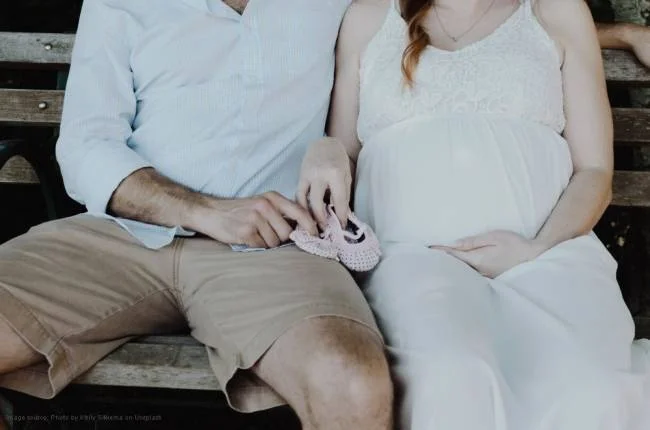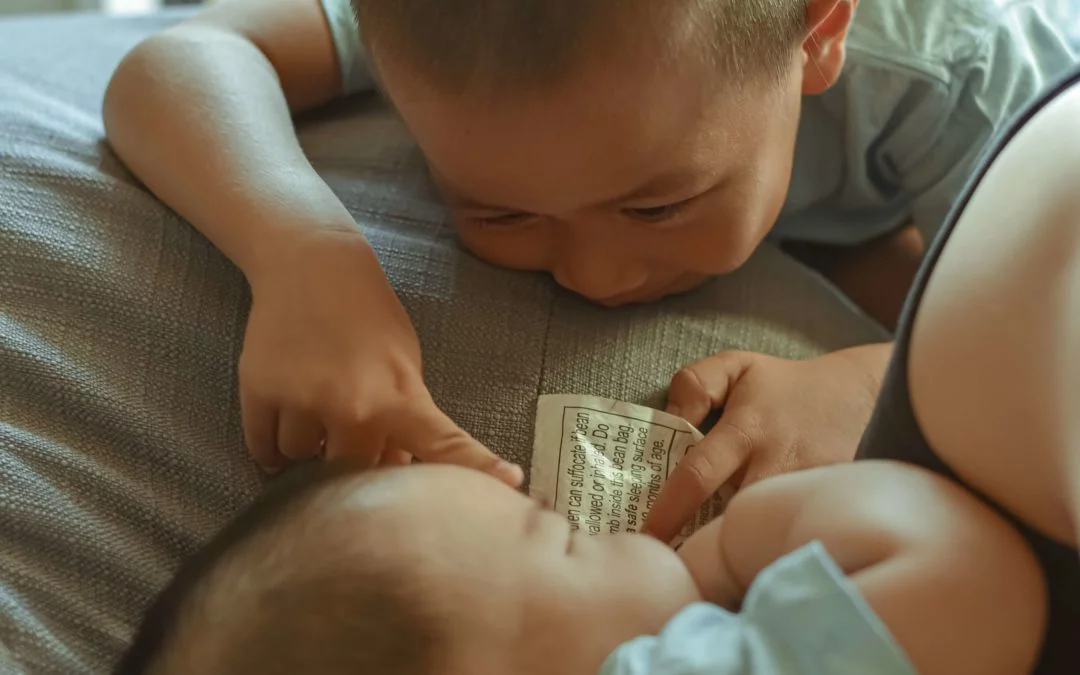So, here you are into the middle three months of the pregnancy, also known as the second trimester, which runs from weeks 13–27(or months 4–6). The great news about the second trimester is that the risk of miscarriage reduces dramatically. The second trimester is known as the month when mum ‘blooms’ and has lots of energy – but beware as this isn’t always the case!

So what’s happening under the surface… to your baby, and your partner?
Your baby
Baby’s development is really moving along in the second trimester:
- By the end of the second trimester your baby will be approximately 24cm long and weighing in at around 2lb (equivalent to a bag of sugar!)
- Around the 16-week mark your baby may start to hear, and by about week 24 they can differentiate sounds and can start to recognise your voice
- By the end of the second trimester your baby’s fingernails will have formed and your baby will also have their fingerprints.
- They are starting to grow their hair
What’s happening to your partner?
The widespread belief about the second trimester is that mum will suddenly feel full of energy and wellbeing, she will develop thick glossy hair and turn into a sex fiend… Sound too good to be true? Yep, that’s because these are all largely myths – after all, pregnancies are all individual and affect women in different ways. Just as some women find the first trimester very difficult while others glide through without a symptom, some women still experience lots of challenging symptoms in the second trimester while others feel fantastic. The only way you know how your partner is feeling, is by talking to her.
As the second trimester progresses, mum’s physical shape will begin to change to accommodate your growing baby. While a lot of the pregnancy symptoms in the first trimester were related to hormonal changes in pregnancy, in the second trimester mum also has physical changes to contend with on top of this!
Common experiences of the second trimester for mum include:
- The baby’s movements may cause some discomfort at times or keep her awake at night
- She may need to find new clothes to fit her changing shape as her bump begins to show.
- Her skin and hair may be affected by hormonal changes – she may get thicker hair and glowing skin, or can experience greasier hair and spots.
- She may notice discomfort in her pelvis as the ligaments relax and baby becomes heavier
- She may also experience constipation, odd cravings for foods and mood swings.
- Swelling of the feet and hands is not unusual during this time nor is a stuffy nose (and some snoring during sleep!)
Around the middle of the second trimester Mum may start to experience tightening sensations around her bump, which are normal and are called Braxton Hicks. It is helpful to think of these as a warm up; the body is practicing some contractions in preparation for labour. During these Braxton Hicks the cervix does not start to dilate, which is why it is also sometimes referred to as false labour – but don’t be fooled, for some women Braxton Hicks can be pretty strong!
However, sometimes babies do try and arrive a bit early, so if your partner does experience contraction sensations which get stronger and do not go away when she changes position, or if she suspects her waters may have broken before 37 weeks, contact your local maternity ward as soon as possible. Problems in pregnancy.
Emotionally, Mum is likely to be worrying less about things going wrong with the pregnancy than before, but that doesn’t necessarily mean she will stop worrying entirely! She may start to worry about the changes to her body, about being a good mother, whether she will be able to breastfeed and how she will cope with labour and birth. With all the physical, hormonal and lifestyle changes taking place, reassurance from you (rather than jokes!) is important.
Her health in pregnancy: the basics
The Anomaly Scan
You will have the opportunity to go for an anomaly scan at around 20 weeks. The primary focus of this scan to is to check your baby’s anatomy and make sure they are developing normally. Again, this is a great opportunity to bond with your baby, and if you have been to the first scan already, you will be amazed at how much they have developed since then. You may even see them wriggling around and kicking!
They may be able to tell the baby’s sex, but it is not an exact science, baby may not be in a position to be able to see ‘it’ (or the absence of ‘it’ as the case may be!), and as it is not the purpose of this scan your hospital may even have a policy of not revealing the sex – so while you may be able to find out, there is also a chance you may not.
The Triple Test
At this point they will also offer your partner the Triple Test. The clue is in the name for this one, it is a blood test for three conditions, Down’s syndrome, Edwards’ syndrome and Patau’s syndrome.
As with all medical tests related to the pregnancy, it is a choice whether or not to have it done. Some people want to find out the risk of their baby having these conditions, and some do not.
You can choose to have screening for:
- all the conditions (Down’s, Edwards’ and Patau’s syndromes)
- Down’s syndrome only
- Edwards’ and Patau’s syndromes only
- none of the conditions
It is helpful to understand that the results of the Triple Test will just say whether the baby is at high or low risk of these conditions. To be certain whether a baby has one of them, a test called an amniocentesis would need to be carried out. Amniocentesis does carry risks, including that of miscarriage, as it involves a needle that is inserted through your partner’s abdomen and into the amniotic fluid that surrounds the baby to take a small sample for testing.
The First Kicks
Babies start to become increasingly active from 20 weeks – kicking, punching, stretching, twisting and turning, which you will be able to see and feel through your partner’s stomach.
At around 20 weeks your partner may be able to feel baby moving inside (although this varies hugely, and is also normal to be earlier or later than this) and by about 25 weeks, you may be able to feel baby moving around if you place your hand on your partner’s belly. This may require a little patience at first as your baby plays their version of hide and seek with you, but is well worth the wait!
At around week 24 your baby can differentiate sounds and is able to hear and recognise your voice. This is a great time to help them get to know you – you can talk to them, read a story to them or sing. Even telling them about your day at work or your football team is beneficial, so be creative and do what feels right!
The Second Trimester Dad
Your support during second trimester is again important. As your partner’s body shape starts to change, many women become self-conscious, so don’t make jokes about her shape under any circumstances!
Your emotions tend to start to catch up with partner’s at this point. You are likely to feel excited, distracted and even start to have concerns of your own. You may now start to worry about both the health of your baby and partner as you start to become aware of the physical changes taking place. You may also start to worry about the changes to the family unit once baby joins you and how you will manage financially. You might also have some fears of being left out once baby arrives. All of these are totally normal, but you need to deal with these concerns, not just ignore them. A great way to do this is by chatting to other dads in the same boat as you, and seeing that it is something that a lot of men go through. Antenatal classes can be a great opportunity to do this
What goes on at an antenatal class?
Then you are heading into the final furlong, and before you know it, it’s The final three months of pregnancy








